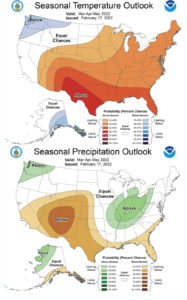
Nashville experienced several unusual weather events this winter, but it wasn’t as cold as it may have seemed.
In December, the average temperature was more than 10 degrees warmer than the 30-year climate normal, according to the National Weather Service. Plus, there were 21 tornadoes in Middle Tennessee — which is more tornadoes than in NWS’s 200-year recorded history for the month of December.
January was a bit colder: The average temperature was 2.7 degrees cooler than normal, and snow was up 7.5 inches for a total of 9.5 inches of snow — which turned into an opportunity for sledding and even skiing on a hill outside the Tennessee State Capitol building during the biggest snowfall on Jan. 6.
“We were just stuck in this cold weather pattern, and when you get these systems with moisture coming in over and over, you do increase your chances for wintry precipitation,” said Krissy Hurley, NWS Nashville’s warning coordination meteorologist.
February temperatures were about normal. There was no measurable snow, and rainfall was more than four inches higher than average for a total of 8.6 inches.
Together, snowfall was more than five inches higher than normal for the meteorological winter. But Nashville’s average winter temperature was also a bit warmer than average, due to the heated start.
“It’s very deceiving,” Hurley said, referring to people’s recollection of the weather as “short-term memory.”
Now, the region will be moving into a warming trend, with 70-degree temperatures expected by the end of the week.

The latest three-month outlook for temperature and precipitation forecasts Tennessee for slightly warmer and wetter weather — though it can play out very differently day-to-day over the course of those months.
The National Oceanic and Atmospheric Administration’s official spring outlook will be issued on Thursday.
As astronomical spring comes March 20, which local forecasters describe as the start of severe weather season, Tennessee becomes very wet. The water table rises during the winter months, retaining winter rainfalls, so a heavy spring rain could mean enhanced flooding hazards.
This contrasts the western half of the U.S. More than half the nation is currently in a moderate drought, with many places experiencing extreme or even exceptional drought.


